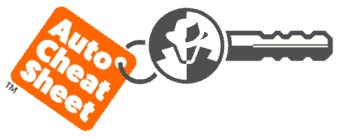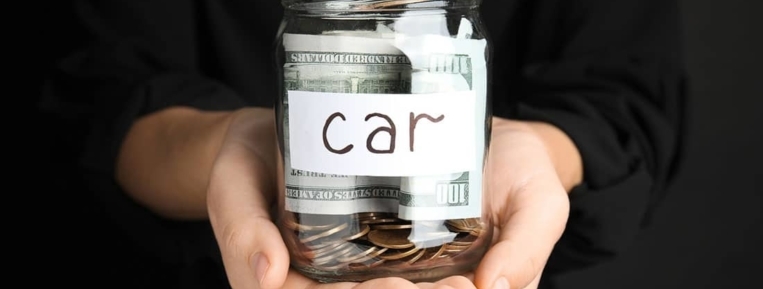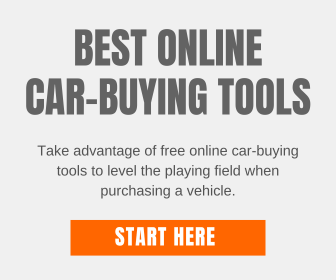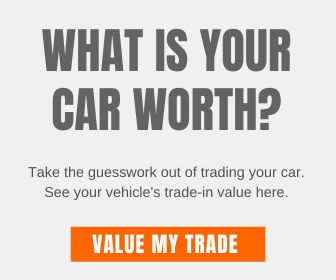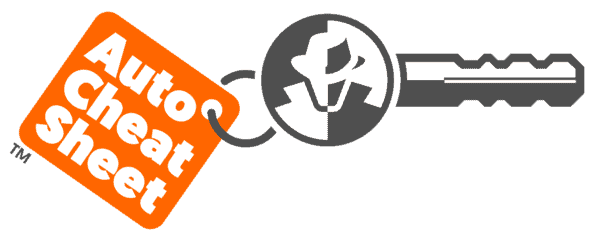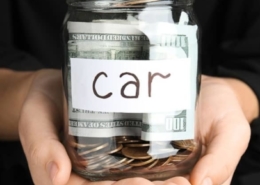How Much Money Should I Put Down When Buying a Car?
Cash is king when it comes to buying a car.
One of the most common questions I get is, “How much money should I put down buying a new or used car?” Although there is no hard, fast rule on how much cash you should put towards your car purchase, there are a few factors to consider before making a final decision.
Car dealers advertise “$0 Money Down” or “No Money Down” to lure car buyers like yourself into dealerships across the nation. So, “Is not putting any cash down when buying your next car a good idea?” Read on to find out.
Table of Contents
- How much money should I put down on a car?
- Do you have to put money down when buying a car?
- Cash is king definition
- Benefits of a large down payment
- Impact on loan terms
- Factors affecting your down payment
- Pros and cons
- Financial planning and saving
- What about $0 down ads?
- How vehicle price affects cash down
- Lowering your payment by extending the term
- Dealership down payment tricks
- Never pay with cash or check
- Frequently asked questions
- Final thoughts
How Much Money Should I Put Down on a Car?
When purchasing a new car, aiming for a down payment of around 15-20% of the vehicle’s purchase price is optimal.
Your Cash Down Payment
15-20% of the Purchase Price
A substantial down payment enhances your financial stance post-purchase. If these figures seem steep, contribute the maximum you comfortably can, ensuring you preserve your savings and emergency reserves.
Nevertheless, it’s common for many buyers in today’s market to opt for smaller initial payments when buying vehicles.
Do You Have to Put Money Down on a Car?
The quick answer to this question is, “No, you don’t have to put cash down when buying a new or used car!”
If you have an excellent credit score and a long credit history and can budget for the total amount of the monthly car payments, you will not be required to put any money down when buying a vehicle. If you have some bumps in your credit history or bad credit, the lender may or may not require a minimum of 10% down or more of the vehicle’s purchase price at the time of buying the car.
Remember, not putting money down when purchasing a vehicle will make you pay more for the car in the long run. Any money borrowed will be subject to interest charges when financing a car through a bank or lender if you don’t put enough cash down to cover your tax, title, license, and fees. You will also be paying unnecessary interest on it. The golden rule is that the less money you borrow, the less interest you will pay, and the more money you save.
If you want to purchase a vehicle with $0 down, consider covering your car’s tax, title, license, and related fees upfront. Otherwise, you’ll be adding unnecessary interest to these amounts.
Lastly, don’t let the dealer steer your financing if you aim to clinch that car with $0 down. Protect yourself from dealer finance scams by arranging a pre-approved auto loan first to see what kind of interest rates you will qualify for. You can leverage your pre-approved auto loan when negotiating finance rates and terms with the dealer.
Lastly, don’t let the dealer steer your financing if you aim to clinch that car with $0 down.
Cash is King Definition
In the car business, “Cash is King” means having cash on hand, which gives a buyer significant leverage. This leverage can lead to better deals, more negotiation power, and sometimes quicker transaction processes. Dealers often prefer cash transactions because they are straightforward and eliminate the complexities and delays associated with financing approvals and checks. This preference can translate into discounts or incentives for cash buyers, as dealerships aim to close deals quickly and reduce administrative burdens.
Benefits of a Higher Down Payment
A larger down payment reduces your monthly payments, boosts your car’s initial equity, and may avoid the need for gap insurance, saving you money and reducing financial risks.
1. Lower Monthly Payments
One of the most immediate benefits of a higher down payment is lower monthly payments. This reduction can significantly ease your monthly financial burden, allowing you to be more flexible in your budget and less strain on your cash flow.
2. Equity Building
Another advantage of making a significant down payment is starting with a higher equity in your vehicle. This equity acts as a financial buffer, reducing the risk of becoming “upside down” on your loan, where you owe more than your car is worth. This position is particularly beneficial if you need to sell the vehicle or if it is totaled in an accident.
3. Avoiding Additional Fees
A substantial down payment can also help you avoid the need for gap insurance. Gap insurance covers the difference between the value of the car and the amount you owe; however, if your down payment is large enough, this may not be necessary, saving you an additional expense.
The Impact of a Large Down Payment on Loan Terms
A larger down payment reduces the amount you need to borrow, lowering your interest costs and improving your loan terms. It also decreases your loan-to-value ratio, making you a less risky borrower, which can lead to easier loan approvals and access to better financing options.
1. Reducing the Loan Amount
A larger down payment decreases the total amount you need to borrow, which can significantly reduce your financial burden. Lowering the loan amount minimizes the interest accrued over the loan life and enhances your chances of receiving better loan terms from lenders. A reduced loan amount means less risk for the lender and often results in lower interest rates.
2. Improving Loan Approval Odds
Lenders evaluate risk based on the loan-to-value ratio (LTV). A lower LTV ratio, which results from a higher down payment, makes you a less risky borrower. This improved risk profile can lead to easier loan approvals and may even qualify you for premium financing options unavailable to those with higher LTV ratios.
Factors Affecting Your Down Payment
What determines the size of your down payment? It depends on your finances, the type of car you want, and the details of your loan options. Let’s break these down.
1. Personal Financial Situation
First, examine your finances. Are you in a comfortable financial position? Your savings, monthly bills, and other financial obligations will significantly influence how much you can put down.
2. Type of Vehicle
Are you buying a luxury car or a more affordable one? The type of car affects the down payment required. Luxury cars often need a more significant down payment.
3. Loan Terms and Conditions
Each loan is different. Some may offer lower interest rates if you make a larger down payment, while others might be more flexible. Make sure to read all the details carefully.
Pros and Cons of a Large Down Payment
Let’s look at the benefits and drawbacks of a large down payment.
Benefits of a Large Down Payment:
- Enhanced Financial Flexibility: A more significant down payment leads to smaller monthly payments.
- Favorable Interest Rates: Paying more upfront can get you better interest rates.
- Swift Ownership: You’ll own your car sooner.
- Savings on Interest: Paying a large sum initially reduces the total financed amount, saving you money on interest and fees.
- Improved Loan Approval Chances: A lower Loan-to-Value ratio (LTV) improves your profile with lenders, making it easier to get approved.
- Demonstrated Commitment: A larger down payment shows you’re serious, which reduces the risk for lenders.
- Shorter Loan Tenure: If you pay more initially, you can choose shorter loan terms, which means you’ll finish paying off the loan quickly.
- Reduced Monthly Payments: The more you pay upfront, the less you pay each month.
- Guard Against Negative Equity: A substantial down payment protects you from owing more than your car is worth in the future.
Potential Downsides:
- Strain on Immediate Savings: Paying a lot upfront can reduce your immediate savings.
- Lost Investment Opportunities: You could have invested the money used for the down payment for higher returns.
- Limited Cash Flow: A sizeable down payment can tie up cash needed for emergencies or other essential expenses.
- Reduced Financial Flexibility: Allocating a significant amount of money for a down payment might limit your ability to handle unexpected financial challenges.
Pro Tip: Add an extra $10, $25, $50, or more to the principal amount when you make monthly car payments. This small addition can grow over time, reducing the interest you pay over the life of the loan and speeding up your path to financial freedom.
Financial Planning for Your Down Payment
While a large down payment may seem unachievable, establishing a disciplined savings plan can make it possible.
Setting a Savings Goal
Planning for a large down payment requires disciplined savings. Set a monthly savings goal based on the price range of the car you intend to buy and your timeline for purchase. This strategy prepares you financially and improves your negotiation power when purchasing.
What About the $0 Down Dealer Ads?
Car advertisements touting “$0 down” offers have significantly shifted the mindset of modern car buyers. While these zero-down deals can be tempting, they often come at a hidden price.
Dealerships and financiers promote such offers because they attract customers and rake in more via interest.
Car Buying Tip – Always try to pay an extra $10, $25, $50, or more on the principal amount when making your monthly car payment. This additional money will add up over time and help decrease interest charges over the length of your car loan.
Before settling on a down payment amount, it’s essential to determine the actual new car cost to the dealer and formulate a reasonable profit-based offer for the new car. This understanding will give you a clearer perspective on the desired down payment.
Typically, setting aside 15-20% of the car’s price for the down payment is advised. This might be a stretch for some, but aiming for this range is beneficial.
A heftier down payment means you sidestep burdensome monthly payments, extended loan terms, and steep finance charges.
Plus, it safeguards you from the dreaded negative equity scenario when you decide to sell or trade-in later.
While the 15-20% mark is ideal, it’s essential not to dip below the total of your tax, title, and license fees (TT&L). Financing these fees will lead to avoidable interest charges. Even a modest down payment is preferable to none.
For those with credit hitches or first-time buyers, having a down payment in the ballpark of 15-20% can boost your appeal in the eyes of lenders catering to lousy credit or first-timers.
Saving up for a down payment before taking the car-buying plunge ensures better trade-in value in the future. Skimping on the initial payment can lead to detrimental purchasing habits that may come back to bite.
Moreover, a significant down payment can increase your chances of snagging a low-interest auto loan. While banks and credit unions are viable options, exploring online auto finance lenders might get you the most competitive interest rates.
How the Price of Your Vehicle Influences Your Down Payment
Look at the chart below to find out the ideal down payment for the price of the car you want to buy.
Remember, these numbers are just guidelines to help you plan your savings:
| Vehicle Price | 15% Down | 20% Down | 25% Down |
|---|---|---|---|
| $6,000 | $900 | $1,200 | $1,500 |
| $8,000 | $1,200 | $1,600 | $2,000 |
| $10,000 | $1,500 | $2,000 | $2,500 |
| $12,000 | $1,800 | $2,400 | $3,000 |
| $14,000 | $2,100 | $2,800 | $3,500 |
| $16,000 | $2,400 | $3,200 | $4,000 |
| $18,000 | $2,700 | $3,600 | $4,500 |
| $20,000 | $3,000 | $4,000 | $5,000 |
| $25,000 | $3,750 | $5,000 | $6,250 |
| $30,000 | $4,500 | $6,000 | $7,500 |
| $35,000 | $5,250 | $7,000 | $8,750 |
| $40,000 | $6,000 | $8,000 | $10,000 |
| $50,000 | $7,500 | $10,000 | $12,500 |
To see what percentage of the car’s price your down payment covers, divide your down payment by the total cost of the vehicle.
For example, if you have saved $2,200 and want to buy a $14,000 car, dividing $2,200 by $14,000 gives you a down payment of 15.7%.
Money Down vs. Increasing the Auto Loan Term
Are you considering buying a car but don’t have enough for the down payment? The salesperson might offer a great solution: lower monthly payments with no down payment.
Use caution with this tempting offer! The real trick is to extend your loan term. Dealers might suggest increasing the length of your loan by several years.
$0 Down + Lengthier Loan Term = Overpaying Big Time!
Sure, prolonging the loan period minimizes your monthly payments by spreading the total amount over a more extended span. But here’s the catch: you’ll end up shelling out significantly more in interest and additional financial charges, a detail often glossed over by eager salespersons.
I’ve witnessed customers finance cars for staggering periods like 84 or 96 months, all without a down payment. Their goal? Driving off with their dream car, irrespective of the financial ramifications. Such stretched terms, like 72 or 96 months, can lead to financial pitfalls.
If you can’t make a down payment of at least 15-20% and need more than 48 months to afford the monthly payments, it’s time to think again. You might want to look for a cheaper car, save up a larger down payment, or wait to buy until your finances are more secure.
For illustrative purposes, let’s crunch some numbers. Imagine you’re financing a new car you’ve negotiated to $18,000. What does the picture look like with no trade-in, zero down payment, a 7% interest rate, and a 6% sales tax rate? We’ll skip any minor state-specific fees for this scenario.
| Payment over a 3 year auto loan with $0 cash down | ||
|---|---|---|
| $18,000.00 | = | Agreed upon new car purchase price. |
| $1,080.00 | + | 6% sales tax rate. |
| $2,128.86 | + | Interest over a 3 year auto loan at 7% APR. |
| $21,208.86 | = | Total of car loan payments over 3 year term. |
| $589.14/mo | = | Your monthly car loan payment. |
| Payment over a 4 year auto loan with $0 cash down | ||
|---|---|---|
| $18,000.00 | = | Agreed upon new car purchase price. |
| $1,080.00 | + | 6% sales tax rate. |
| $2,850.93 | + | Interest over a 4 year auto loan at 7% APR. |
| $21,930.93 | = | Total of car loan payments over 4 year term. |
| $456.89/mo | = | Your monthly car loan payment. |
| Payment over a 5 year auto loan with $0 cash down | ||
|---|---|---|
| $18,000.00 | = | Agreed upon new car purchase price. |
| $1,080.00 | + | 6% sales tax rate. |
| $3,588.41 | + | Interest over a 5 year auto loan at 7% APR. |
| $22,668.41 | = | Total of car loan payments over 5 year term. |
| $377.81/mo | = | Your monthly car loan payment. |
| Payment over a 3 year auto loan with $20% cash down | ||
|---|---|---|
| $18,000.00 | = | Agreed upon new car purchase price. |
| $1,080.00 | + | 6% sales tax rate. |
| $19,080.00 | = | Subtotal amount financed. |
| $3,600.00 | - | 20% down payment. |
| $15,480.00 | = | Total amount financed. |
| $1,727.19 | + | Interest over a 3 year auto loan at 7% APR. |
| $17,207.19 | = | Total of car loan payments over 3 year term. |
| $477.98/mo | = | Your monthly car loan payment. |
Opting for a shorter loan term might mean steeper monthly payments, but the savings are tangible. With a 36-month term, you’d be spending just $2,128.86 on interest, compared to a whopping $3,588.41 over 60 months. That’s a tidy sum of $1,459.55 saved!
Extending your term to 42 or 48 months might ease your monthly outflow, but the accruing interest begins to surge. This is where the allure of ads screaming “zero down offers” or “buy now, pay nothing” can derail sound financial decisions. While a zero down payment might seem tempting, it usually comes at a premium in the long run.
Beware: How Dealers Might Play Tricks with Your Down Payment
It’s not uncommon for potential car buyers to be wary of making a down payment, fearing the dealership might have ulterior motives.
But with diligent tracking of your funds, you’ll be in safe territory.
“Your Down Payment Doesn’t Influence the Sale Price of a New or Used Car.”
When to Reveal Your Cash Down Intentions
Hold off on revealing your down payment intentions until the purchase price of the desired vehicle is settled. If probed about it beforehand, it’s wise to state that you’re currently short on funds. Why, you ask? Dealerships aim to gauge any upfront payment to skew the numbers in their favor potentially.
Stay focused if a car sales rep mainly discusses monthly payments or uses convoluted techniques like the “four square” method. Your priority should be to establish the rock-bottom price they’re willing to part with the car for. Bring in the topic of down payments only after settling on the vehicle’s price.
Post all relevant fees (tax, title, license, etc.); the down payment should be subtracted from the settled price. Here’s a breakdown:
| How to Correctly Deduct Money Down | ||
|---|---|---|
| $18,000.00 | = | Agreed upon new car purchase price. |
| $1,080.00 | + | 6% sales tax rate. |
| $19,080.00 | = | Subtotal amount financed. |
| $3,600.00 | - | 20% down payment. |
| $15,480.00 | = | Total amount financed. |
The Disappearing Down Payment
While most dealers are ethical, a few might try tactics to whisk away a chunk of your down payment. One prevalent method is by “tweaking” the numbers. The illustration below showcases how this seemingly simple adjustment can burden your wallet:
| How dealers steal your down payment. | ||
|---|---|---|
| $20,000.00 | = | Vehicle purchase price. (Artificially raised) |
| $1,200.00 | + | 6% sales tax rate. |
| $21,200.00 | = | Subtotal amount financed. |
| $3,600.00 | - | 20% down payment. |
| $17,600.00 | = | Total amount financed. |
In the depicted scenario, the dealer discreetly bumps the car’s price tag by $2,000, removing your down payment. Though this is a standard ploy, it’s not the sole one.
Having mastery over number crunching, some unethical dealers may attempt to exploit your down payment, trade equity, or even rebates. It might seem like you’d easily catch such discrepancies, but many buyers fall prey to these tactics, especially when fixated on monthly payments or unprepared.
Stay vigilant and scrutinize every document before signing. Knowledge is power, and being prepared can save you from such pitfalls.
Avoid Paying with Cash or Checks at Car Dealerships
Never hand over cash or a check to a car dealer as a deposit or to hold a vehicle. Car salespeople might ask for a deposit or down payment to show the manager you’re serious about buying. Don’t fall for this tactic; only pay when you and the dealer have agreed on the car’s price.
If you pay with cash or a check, it can be very difficult to get your money back if the deal doesn’t work out.
It’s safer to use a credit card for payments at a car dealership. If the deal isn’t perfect, you can dispute the charges with your credit card company.
If a car dealer charges extra for using a credit card, ask them if they want to sell you the car. You can try to negotiate the fee, decide to pay it, or leave and find another dealer who won’t charge it.
In my dealerships, we would never let a credit card fee cost me a car sale. It’s just part of doing business.
Money Down FAQs
How much is the average down payment on a car?
Lenders and financial experts typically recommend 15-20% of the car’s price with an absolute minimum of 10%.
Is zero down payment offers a scam?
Not necessarily, but always be wary of the terms associated with such offers and calculate the additional interest you may end up paying over the life of the loan.
Does a down payment affect interest rates?
Often, yes. A significant down payment shows commitment to the lender and can secure better interest rates.
Can I use a trade-in as a down payment?
Certainly! Many dealerships accept trade-ins as a form of down payment.
How does my credit score influence the down payment?
Your credit score is pivotal in determining the down payment requirement when purchasing a vehicle. A higher credit score typically signifies a good credit history and responsible financial behavior, making lenders more confident in your ability to repay the loan. As a result, if you have a strong credit score, you might qualify for favorable loan terms and even lower down payment requirements. Conversely, lenders might perceive you as a higher risk if your credit score is lower. They could ask for a larger down payment to offset this risk to secure the loan. A good credit score can give you more flexibility and negotiating power regarding down payment amounts. In contrast, a lower score might necessitate a heftier initial payment to approve the financing.
Final Thoughts About Calculating a Down Payment
Finding the correct down payment for your car involves balancing your budget, the car model you want, and your financing options. It’s important to make this choice wisely. While driving off the dealership lot with a new, expensive car and a small initial payment might be tempting, remember the long-term picture.
Staying financially stable and making an intelligent down payment is more valuable than the brief thrill of a quick buy. Plan your car purchase carefully and let your financial health guide you.
After all, the real joy comes from getting the car and making sure its ownership doesn’t strain your finances.
